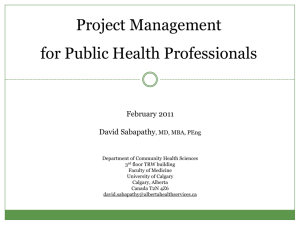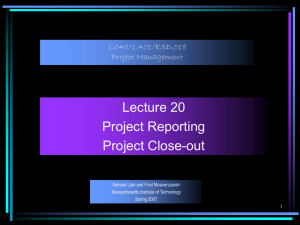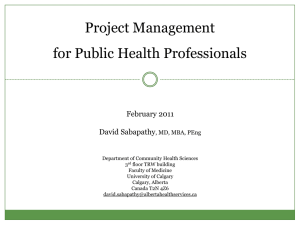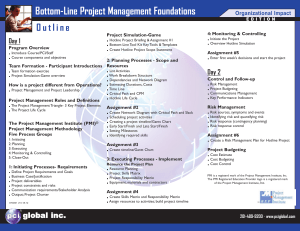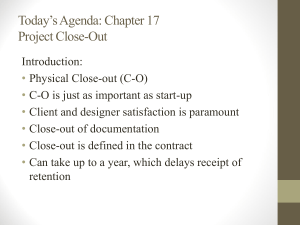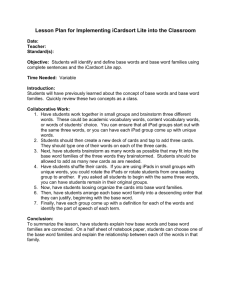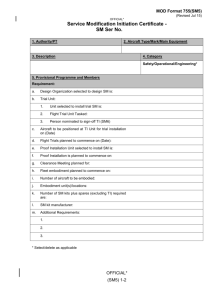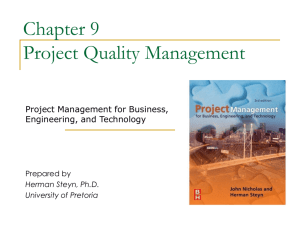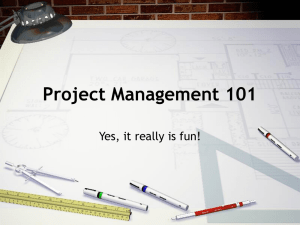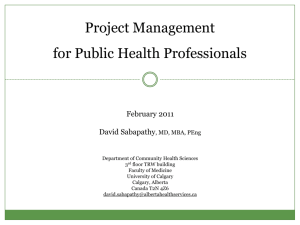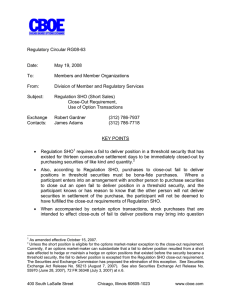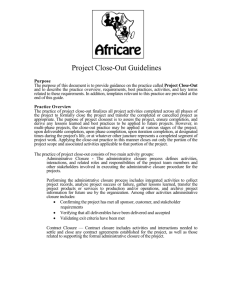Visio-UPPS 04-02-03 SDLC-PM AttachmentIII
advertisement
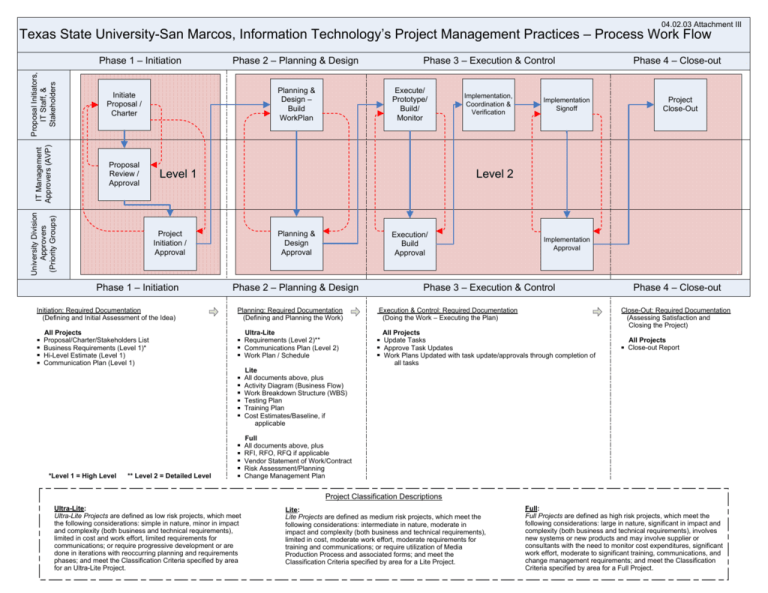
04.02.03 Attachment III Texas State University-San Marcos, Information Technology’s Project Management Practices – Process Work Flow Proposal Initiators, IT Staff, & Stakeholders Proposal Review / Approval University Division Approvers (Priority Groups) Initiate Proposal / Charter IT Management Approvers (AVP) Phase Phase11Phase ––Initiation Initiation 1 – Initiation Phase Phase22–Phase –Planning Planning 2 – Planning &&Design Design& Design Phase Phase33––Execution Execution Phase &&Control Control 3 – Execution Phase Phase 4&–4Control Implementation – Implementation Planning & Design – Build WorkPlan Execute/ Prototype/ Build/ Monitor Level 1 Initiation: Required Documentation (Defining and Initial Assessment of the Idea) Implementation Signoff Planning & Design Approval Execution/ Build Approval Phase 2 – Planning & Design Planning: Required Documentation (Defining and Planning the Work) All Projects Proposal/Charter/Stakeholders List Business Requirements (Level 1)* Hi-Level Estimate (Level 1) Communication Plan (Level 1) Project Close-Out Ultra-Lite Requirements (Level 2)** Communications Plan (Level 2) Work Plan / Schedule Implementation Approval Phase 3 – Execution & Control Phase 4 – Close-out Close-Out: Required Documentation (Assessing Satisfaction and Closing the Project) Execution & Control: Required Documentation (Doing the Work – Executing the Plan) All Projects Update Tasks Approve Task Updates Work Plans Updated with task update/approvals through completion of all tasks All Projects Close-out Report Lite All documents above, plus Activity Diagram (Business Flow) Work Breakdown Structure (WBS) Testing Plan Training Plan Cost Estimates/Baseline, if applicable *Level 1 = High Level . Level 2 Project Initiation / Approval Phase 1 – Initiation Implementation, Coordination & Verification Phase Phase 5–5 Close-out 4 – Close-out ** Level 2 = Detailed Level Full All documents above, plus RFI, RFO, RFQ if applicable Vendor Statement of Work/Contract Risk Assessment/Planning Change Management Plan Project Classification Descriptions Ultra-Lite: Ultra-Lite Projects are defined as low risk projects, which meet the following considerations: simple in nature, minor in impact and complexity (both business and technical requirements), limited in cost and work effort, limited requirements for communications; or require progressive development or are done in iterations with reoccurring planning and requirements phases; and meet the Classification Criteria specified by area for an Ultra-Lite Project. Lite: Lite Projects are defined as medium risk projects, which meet the following considerations: intermediate in nature, moderate in impact and complexity (both business and technical requirements), limited in cost, moderate work effort, moderate requirements for training and communications; or require utilization of Media Production Process and associated forms; and meet the Classification Criteria specified by area for a Lite Project. Full: Full Projects are defined as high risk projects, which meet the following considerations: large in nature, significant in impact and complexity (both business and technical requirements), involves new systems or new products and may involve supplier or consultants with the need to monitor cost expenditures, significant work effort, moderate to significant training, communications, and change management requirements; and meet the Classification Criteria specified by area for a Full Project. .
